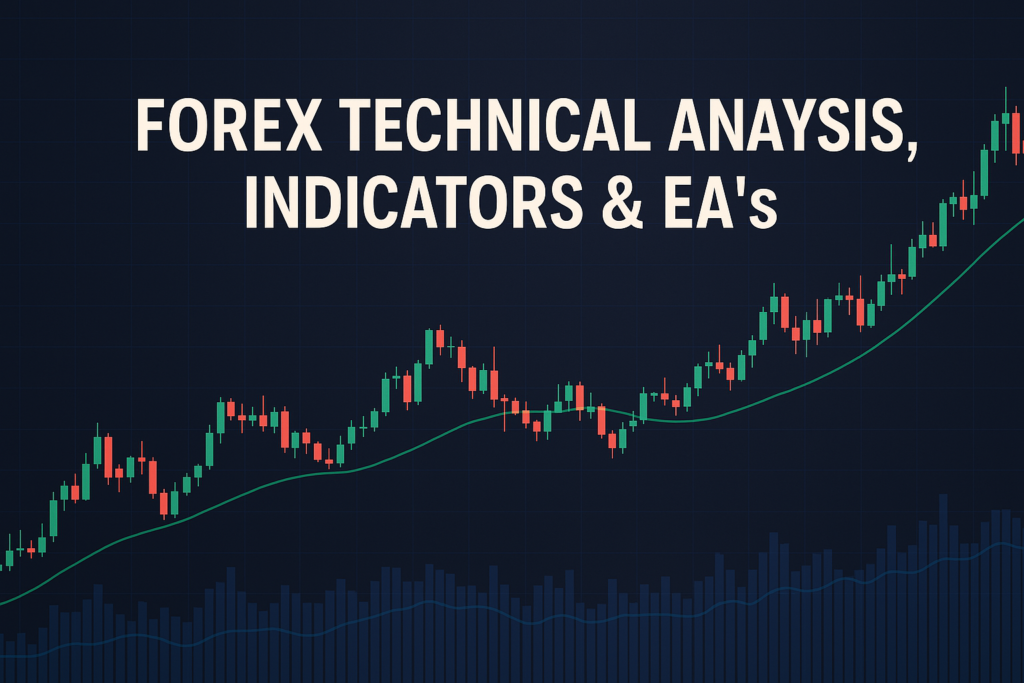
The variable moving average is a powerful tool that helps traders identify trends, manage risks, and make informed decisions in Forex trading.
The variable moving average (VMA) is a powerful tool in Forex trading. It helps traders smooth out price fluctuations and identify trends more easily. By using the VMA, traders can make better decisions based on clearer signals. This tool adapts to changing market conditions, making it essential for anyone looking to succeed in Forex.
However, understanding the variable moving average can be challenging for many traders, both beginners and professionals. Some struggle with its calculations, while others may not fully grasp its significance in their trading strategies. It’s crucial to understand how to apply the VMA effectively to reap its benefits.
In this article, we will explore the variable moving average’s definition, its types, advantages, and disadvantages. We will also discuss how to apply it on popular trading platforms like MT4 and MT5. Lastly, we will share several trading strategies to help you maximize your trading potential.
The adaptive moving average chart is another essential tool worth considering. This chart adjusts itself based on market volatility, offering traders an even more dynamic approach to analyzing price trends.
What is a variable moving average?
The variable moving average is a type of moving average that adjusts itself based on price changes over time. Unlike a simple moving average that takes a fixed number of periods, the VMA changes its length depending on market conditions. Think of it like a friend who knows when to listen closely or when to give you space. The VMA helps traders identify trends without getting lost in the noise.
Types of variable moving average
There are several types of variable moving averages, including:
- Simple Moving Average (SMA): This is the most basic form of moving average, calculated by averaging closing prices over a set number of periods.
- Exponential Moving Average (EMA): The EMA gives more weight to recent prices, making it more responsive to new information.
- Weighted Moving Average (WMA): This moving average assigns different weights to prices, allowing traders to emphasize specific time periods.
How variable moving average smooth out price action
The variable moving average smooths out price action by filtering out market noise. This means that instead of reacting to every little price change, traders can see the overall trend more clearly. For example, if a currency pair is in an upward trend, the VMA will follow that trend closely. This helps traders make informed decisions about when to enter or exit a trade.
Common periods used and why
Traders often use different periods for their variable moving averages, such as 10, 20, or 50 days. The choice of period depends on the trader’s strategy. For short-term traders, a 10-day VMA might be more appropriate, while long-term traders may prefer a 50-day VMA. Each period offers a different perspective on price trends, helping traders decide when to act.
The History of variable moving average: How It Became Popular
Origin of variable moving average
The concept of moving averages dates back to the early 1900s. However, the variable moving average gained popularity in the late 20th century as technology improved. Traders began using software to calculate moving averages automatically, which made it easier to analyze price trends.
When did traders start using it widely?
As online trading platforms emerged in the 1990s, the variable moving average became a staple tool for traders. The accessibility of real-time data and advanced charting tools allowed more traders to adopt this method. Today, it is widely used by both beginners and experienced traders alike.
Real-life stories
Many professional traders have attributed their success to the variable moving average. For instance, one trader shared how they identified a strong upward trend using the VMA, allowing them to make profitable trades. Another trader mentioned that by combining the VMA with other indicators, they could better manage their risks and maximize their returns.
Advantages and Disadvantages of variable moving average
Advantages:
The variable moving average comes with several advantages:
- Helps identify trends easily: The VMA makes it simple to spot trends, guiding traders on when to enter or exit trades.
- Useful for dynamic support and resistance: The VMA can act as a support or resistance level, helping traders make informed decisions.
- Works well for crossover strategies: Traders often use the VMA in conjunction with other moving averages to identify potential buy or sell signals.
Disadvantages:
Despite its advantages, the variable moving average has some drawbacks:
- lags behind price movements: Since the VMA is based on past prices, it may not react quickly enough to sudden market changes.
- Can give false signals in sideways markets: In choppy or sideways markets, the VMA may provide misleading signals, leading to potential losses.
How to Apply variable moving average on MT4 & MT5
Step-by-step guide to adding variable moving average on charts
To add a variable moving average on MT4 or MT5, follow these simple steps:
- Open your trading platform and select your desired currency pair.
- Click on “Insert” in the top menu and select “Indicators.”
- Choose “Trend” and then click on “Moving Average.”
Customizing variable moving average settings
You can customize your variable moving average settings to suit your trading style. Adjust the periods, colors, and types of moving averages to create a personalized trading experience. Choose a period that aligns with your strategy for the best results.
Saving templates for easy application
Once you have customized your variable moving average settings, you can save it as a template for easy access in the future. This saves time and ensures consistency in your analysis.
5 to 7 Trading Strategies Using Only variable moving average
All Time Frame Strategy (M5 to D1)
This strategy uses the variable moving average across multiple time frames. It helps traders identify trends in different market conditions. For example, if the VMA is trending upwards in the M5 chart and also shows an upward trend in the D1 chart, a trader can consider opening a buy position.
Trending Strategies
In trending markets, traders can use the variable moving average to confirm trends. For example, if the price is above the VMA, it may indicate a bullish trend, suggesting a buy position. Conversely, if the price is below the VMA, it may signify a bearish trend, indicating a sell position.
Counter Trade Strategies
Counter-trade strategies involve trading against the prevailing trend. Traders can use the VMA to identify potential reversal points. For instance, if the price crosses below the VMA, it can signal a potential reversal, prompting traders to consider a sell position.
Swing Trades Strategies
Swing trading involves capturing short-term price movements. Traders can use the VMA to identify entry and exit points. For example, if the price bounces off the VMA during an upward move, it can be a good opportunity to enter a buy position.
5 to 7 Trading Strategies Combining variable moving average with Other Indicators
All Time Frame Strategy (M5 to D1)
This strategy combines the variable moving average with the Relative Strength Index (RSI). Traders look for buy signals when the RSI is below 30 and the price crosses above the VMA. For sell signals, when the RSI is above 70 and the price crosses below the VMA, it may indicate a good opportunity to sell.
Trending Strategies
In trending markets, you can use the VMA alongside the Average True Range (ATR). When the price is above the VMA and the ATR indicates increasing volatility, it may be a good time to enter a buy position. If the price falls below the VMA with a rising ATR, it can signal a sell position.
Counter Trade Strategies
Combining the VMA with Bollinger Bands can enhance counter-trade strategies. When the price touches the upper Bollinger Band and crosses below the VMA, it may indicate a potential sell opportunity. Conversely, if the price touches the lower Bollinger Band and crosses above the VMA, it may signal a buy opportunity.
Swing Trades Strategies
For swing trades, you can combine the VMA with MACD. When the MACD line crosses above the signal line, and the price is above the VMA, it may signal a buy opportunity. If the MACD line crosses below the signal line and the price is below the VMA, it can indicate a sell opportunity.
Additionally, if you’re curious about the current exchange rate, you can check the 73 gbp to usd for valuable insights on currency trading.
Top 10 FAQs About variable moving average
1. What is a variable moving average?
A variable moving average is a type of moving average that adjusts based on price changes over time, providing a clearer trend analysis.
2. How is the VMA calculated?
The VMA is calculated by averaging prices over a designated period while allowing the length to change based on market conditions.
3. What are the benefits of using a variable moving average?
Benefits include easier trend identification, dynamic support and resistance levels, and useful crossover strategies.
4. Are there any disadvantages to using the VMA?
Yes, the VMA can lag behind price movements and may give false signals in sideways markets.
5. How can I apply the VMA on MT4 or MT5?
You can add a variable moving average by clicking on “Insert,” selecting “Indicators,” and choosing “Moving Average.”
6. What periods should I use for the VMA?
Common periods include 10, 20, or 50 days, depending on your trading strategy—short-term traders may prefer shorter periods.
7. Can I combine VMA with other indicators?
Yes, the VMA can be effectively combined with indicators like RSI, MACD, and Bollinger Bands for improved trading strategies.
8. How can I save my VMA settings in MT4/MT5?
You can save your customized VMA settings as a template for easy access in the future, ensuring consistent analysis.
9. Is the VMA suitable for all traders?
Yes, both beginners and professional traders can benefit from using the variable moving average in their trading strategies.
10. How often should I check the VMA?
It depends on your trading style. Day traders may check it frequently, while long-term traders may review it less often.
Conclusion
In summary, the variable moving average is an invaluable tool for Forex traders. It offers a unique approach to analyzing price trends and can help traders make informed decisions. By understanding its advantages and disadvantages, and applying it effectively, you can enhance your trading strategy.
Before using real money, it’s essential to test your strategies to find what works best for you. Remember, practice makes perfect, and the more you understand the variable moving average, the better equipped you’ll be to navigate the Forex market.
This guide walks you through some key strategies traders rely on FXStreet, NerdWallet
Expand Your Knowledge
- 📌 Forex Trading Learning Road Map
- 📌 Forex Trading Course with no Fees
- 📌 Forex Trading Issues, Problems, and Solutions
- 📌 Forex Daily Forecast & Live Updates
- 📌 Forex Fundamental & News Analysis: Tomorrow’s Market Movers & Trade Opportunities
- 📌 Forex Education Hub: Learn & Profit
- 📌 Forex Technical Analysis, Indicators & EA’s
Start Trading Today
Ready to take your forex trading to the next level? Open an account with Exness, one of the most trusted platforms in the industry. 👉 Sign Up Now and trade with confidence!
My recommended broker stands out with ultra-low spreads for beginners, instant withdrawals, and zero spread accounts for pro traders.
Trusted since 2008, lightning-fast execution, no hidden fees, and a secure, transparent trading environment—giving you the edge you need to succeed. 🚀
YouTube Video Library: Related Videos
Note: The video above is embedded from YouTube and is the property of its original creator. We do not own or take responsibility for the content or opinions expressed in the video.



